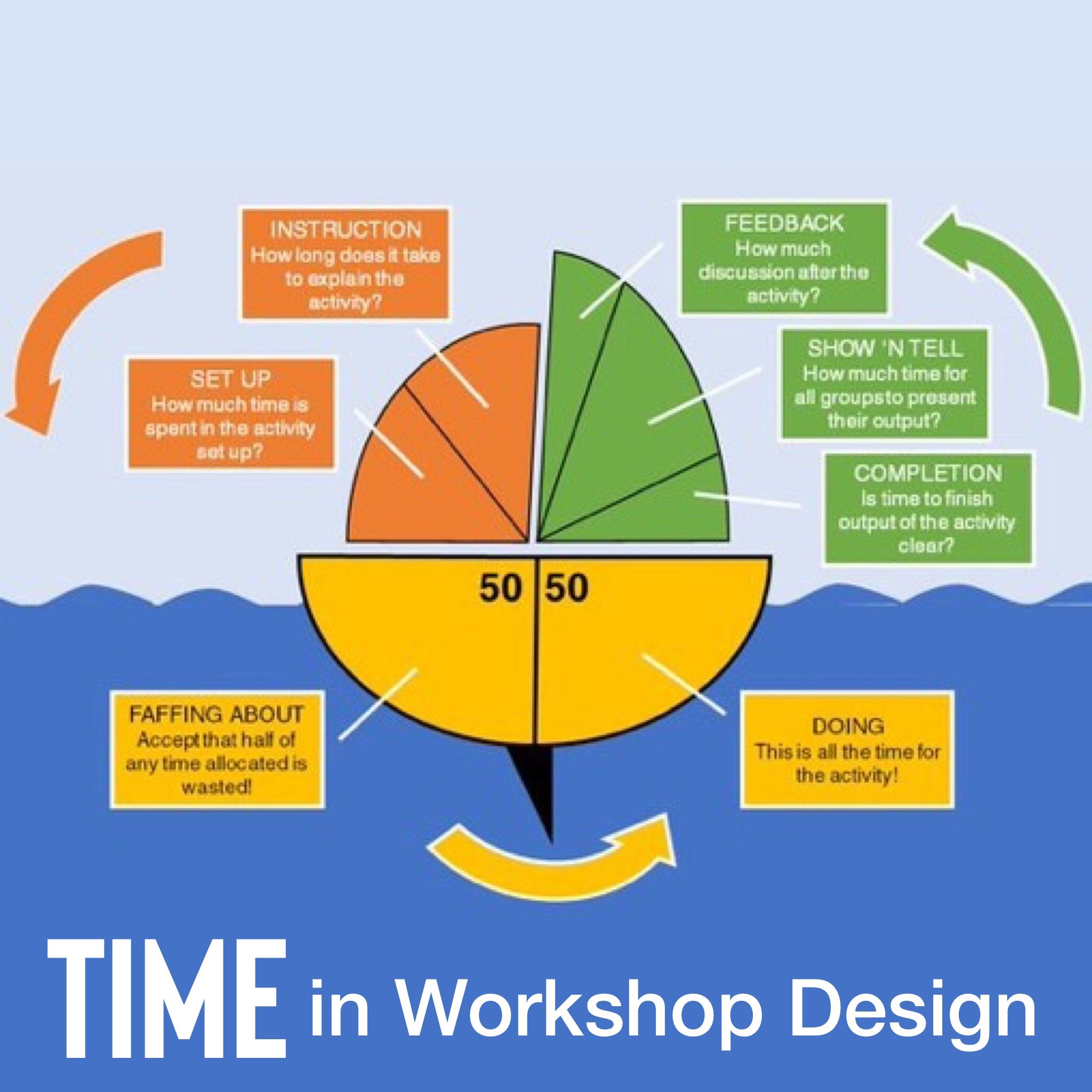
This post is about Time and Activities in workshops.
How to think critically of time allocated to the different elements of activities that workshop participants find value in.
Pre-Activity
Instructions
Question: how long does it take to explain the workshop activity?
Explaining what an activity is, what its outputs are to be and how it all fits within the workshop theme is necessary. The time to do this can be long: especially if clarification questions are allowed.
Set Up
Question: how much time is spent in the activity set up?
Set up is where workshops can lose time without realising it. All the practical work in ensuring everyone has the right materials and know where the activity outputs go (physically or digitally).
Testing Set Up is extremely important. It can be a black hole for workshop activity time. Time lost here can then squeeze time later.
Activity
This is the actual part where participants do whatever it is you are teaching or facilitating. Most workshops use group activities but individual work is just as valid.
Faffing About
Statement: accept that half of any time allocated is wasted!
Workshop participants can seem to waste time even when offered only a few minutes to do something.
From research, this is entirely natural. They showed that people, working in many types of organisation, never really got down to serious work until halfway thru whatever project timescale they were told (in days, weeks, months, etc.). People quite simply faff around.
The Keel
What that faffing around does however, is create an even keel for the group. It’s the socialisation that enables the group to work together.
People in workshops need that time off to be together. It’s valuable time.
However, when facilitating you do need to be very direct in telling everyone when the halfway point is so they can get on with the activity.
Doing
Statement: this is all the time for the activity!
Badly designed workshop activities squeeze this time. This is what this post and this model is mostly about. How do you clearly define and enable this time of doing things together?
Post-Activity
If the Doing part can be squeezed then the Post-Activity parts can be completely lost.
Completion
Question: is time to complete the output of the activity clear?
Making sure, in the final minutes of the Doing, that people have made something that can be described as an output is important. Activities without outputs can be problematic to the sense of learning and achievement.
Show ‘N Tell
Question: how much time for all groups to present their output?
Showing and sharing ideas between people is one of the great reasons for running a workshop. How human imagination and social interaction can make things that are novel and meaningful.
How many people should be asked to show what they made? In hybrid workshops (as opposed to in-person ones), I think more people should have time to show ‘n tell. With no physical presence, the sense of accomplishment shared amongst a group is reduced. Making their work more visible socially matters.
Feedback
Question: how much discussion after the activity?
Group discussions about what an activity meant can help. The facilitator providing some feedback and guidance to how the activity fitted within the overall workshop goals can be very useful.
Again this is the type of ending moment that needs to exist but can be lost to time squeezes.
Designing Hybrid Workshops
I’m currently designing a workshop on designing hybrid workshops and this post is testing an idea for one part of it.
Read Designing Hybrid Workshops for more details.
One comment: